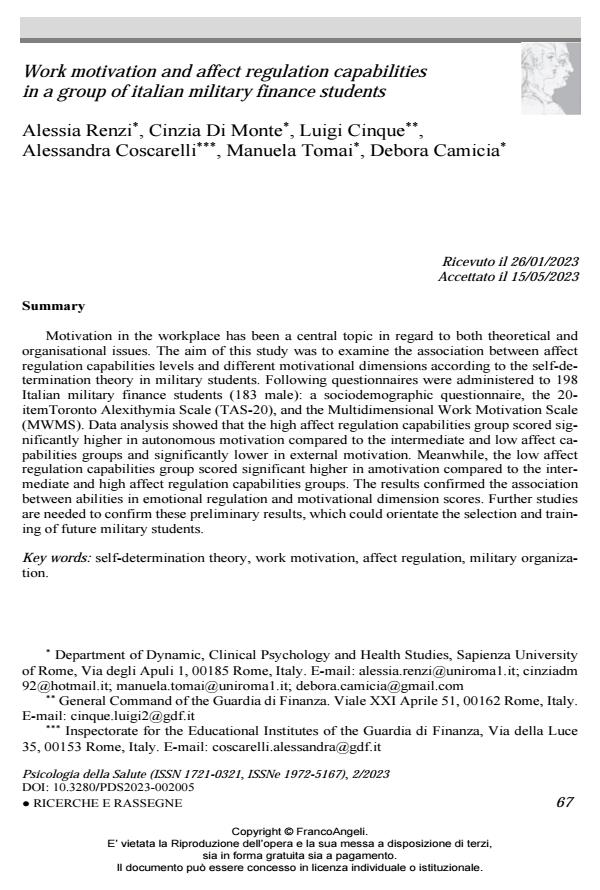Work motivation and affect regulation capabilities in a group of italian military finance students
Journal title PSICOLOGIA DELLA SALUTE
Author/s Alessia Renzi, Cinzia Di Monte, Luigi Cinque, Alessandra Coscarelli, Manuela Tomai, Debora Camicia
Publishing Year 2023 Issue 2023/2
Language English Pages 17 P. 67-83 File size 266 KB
DOI 10.3280/PDS2023-002005
DOI is like a bar code for intellectual property: to have more infomation
click here
Below, you can see the article first page
If you want to buy this article in PDF format, you can do it, following the instructions to buy download credits

FrancoAngeli is member of Publishers International Linking Association, Inc (PILA), a not-for-profit association which run the CrossRef service enabling links to and from online scholarly content.
Motivation in the workplace has been a central topic in regard to both theoretical and or-ganisational issues. The aim of this study was to examine the association between affect regu-lation capabilities levels and different motivational dimensions according to the self-determination theory in military students. Following questionnaires were administered to 198 Italian military finance students (183 male): a sociodemographic questionnaire, the 20-itemToronto Alexithymia Scale (TAS-20), and the Multidimensional Work Motivation Scale (MWMS). Data analysis showed that the high affect regulation capabilities group scored sig-nificantly higher in autonomous motivation compared to the intermediate and low affect capa-bilities groups and significantly lower in external motivation. Meanwhile, the low affect regu-lation capabilities group scored significant higher in amotivation compared to the intermediate and high affect regulation capabilities groups. The results confirmed the association between abilities in emotional regulation and motivational dimension scores. Further studies are needed to confirm these preliminary results, which could orientate the selection and training of future military students.
Keywords: self-determination theory, work motivation, affect regulation, military organization.
Alessia Renzi, Cinzia Di Monte, Luigi Cinque, Alessandra Coscarelli, Manuela Tomai, Debora Camicia, Work motivation and affect regulation capabilities in a group of italian military finance students in "PSICOLOGIA DELLA SALUTE" 2/2023, pp 67-83, DOI: 10.3280/PDS2023-002005